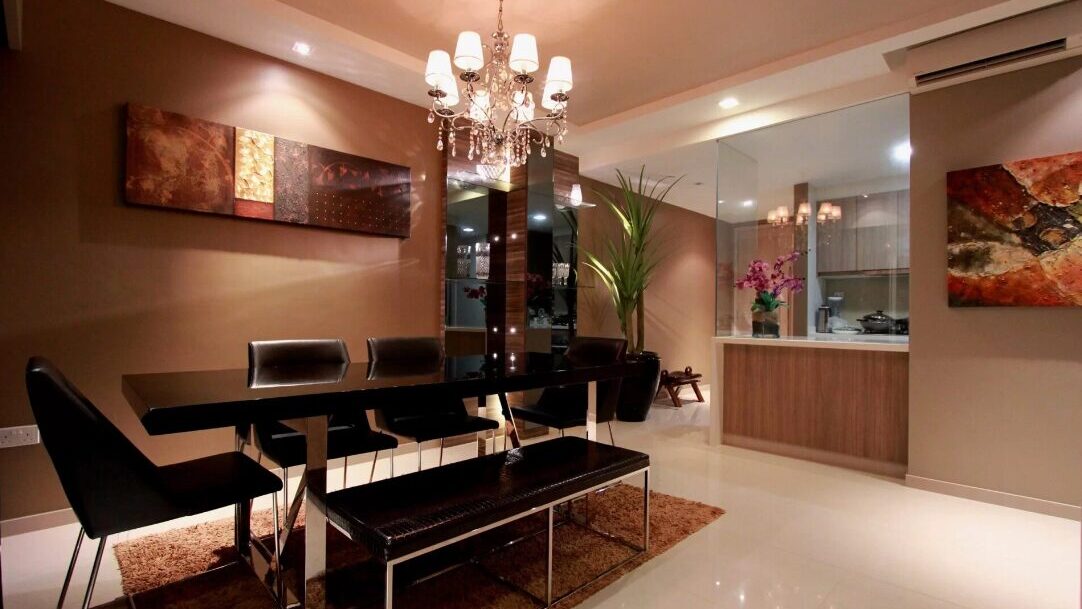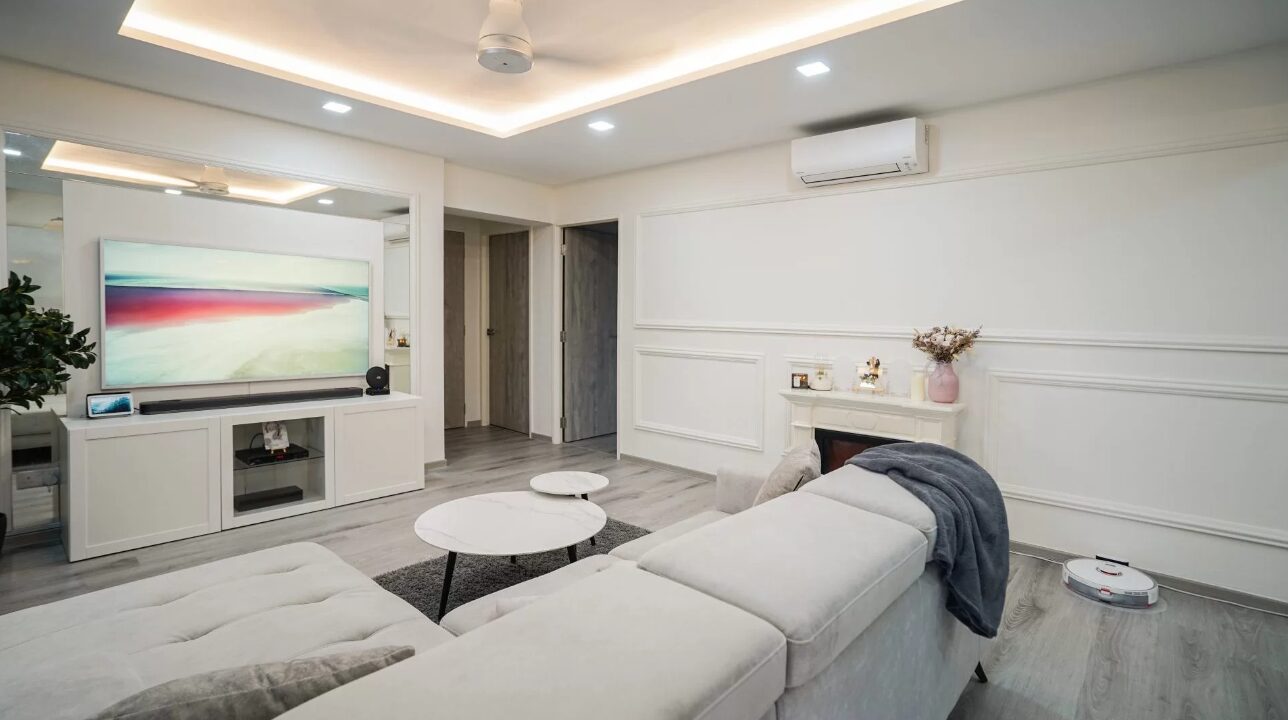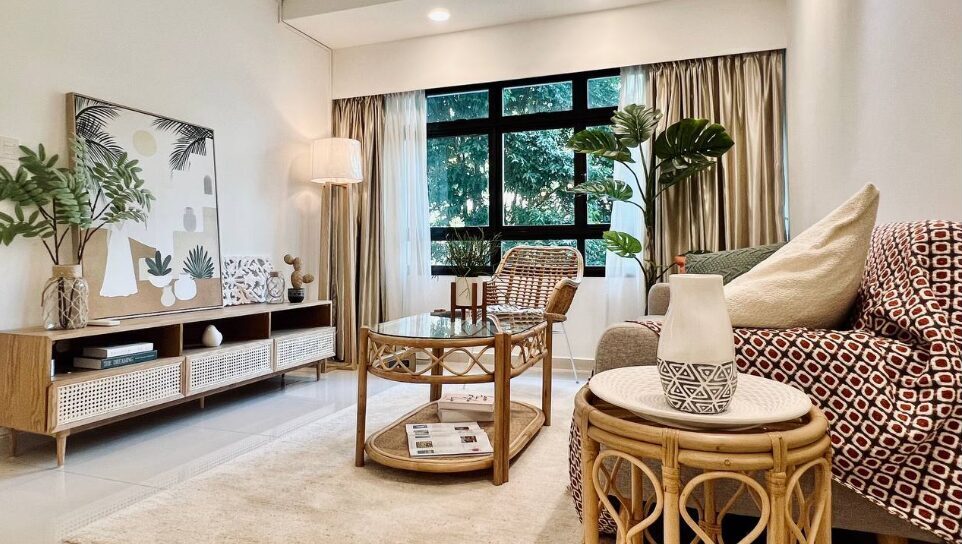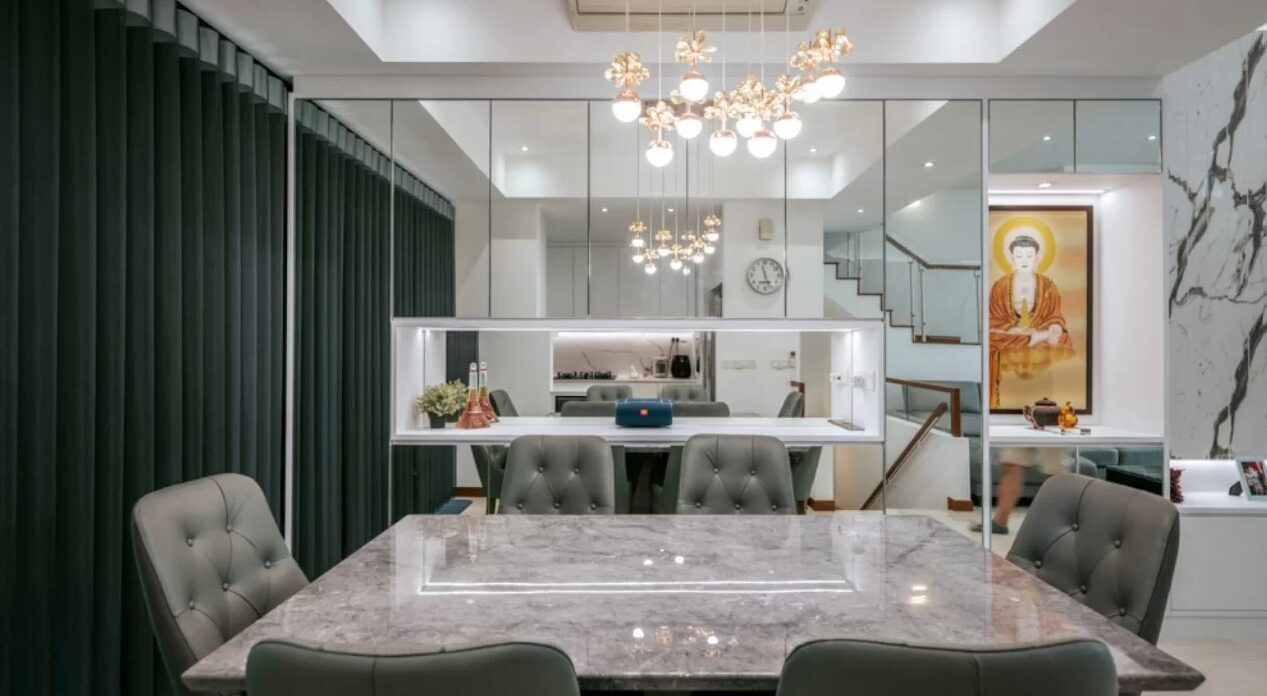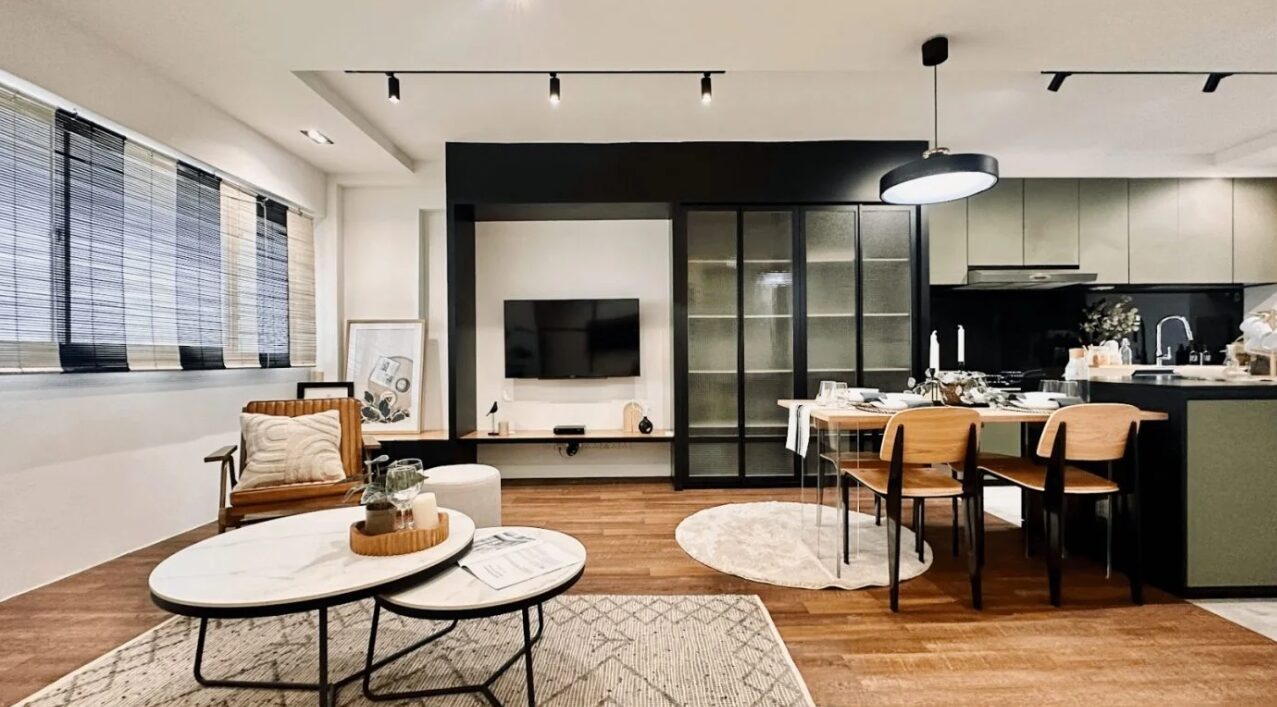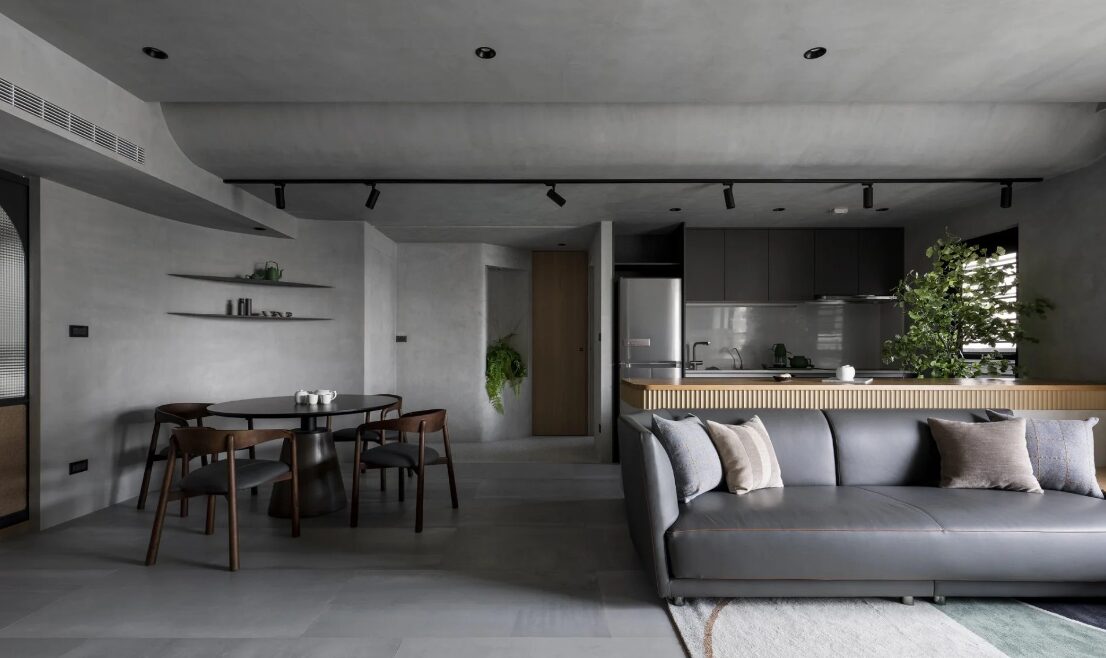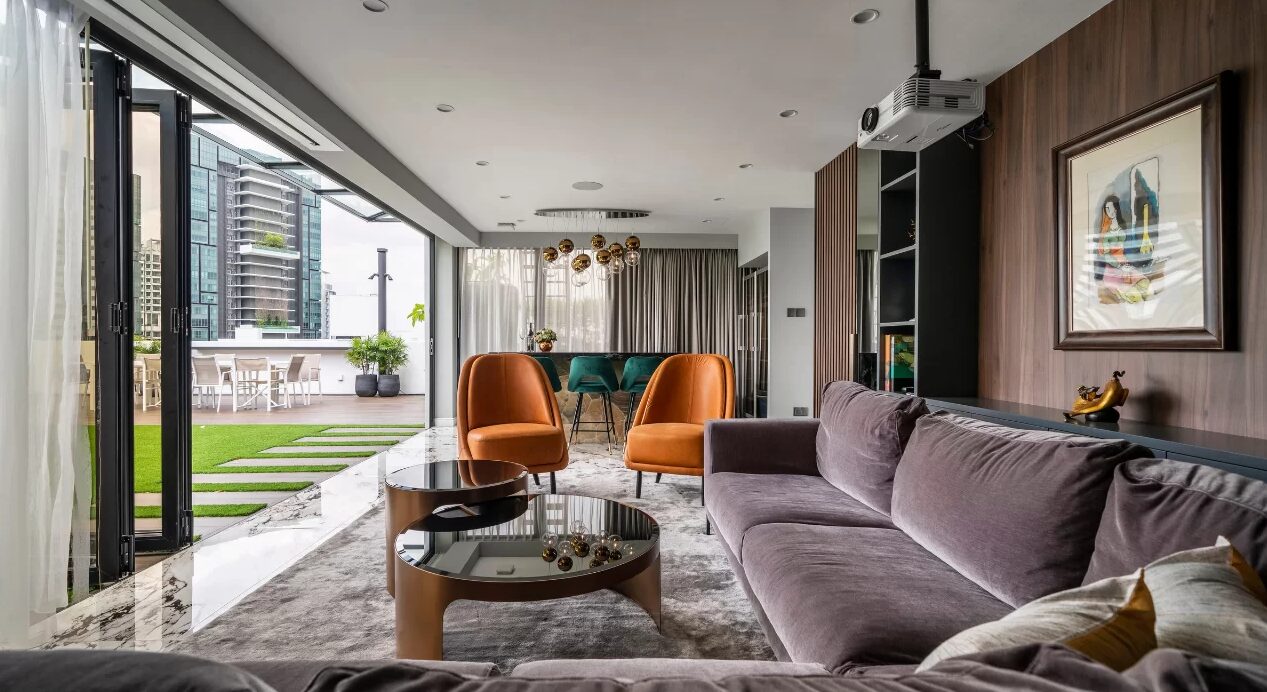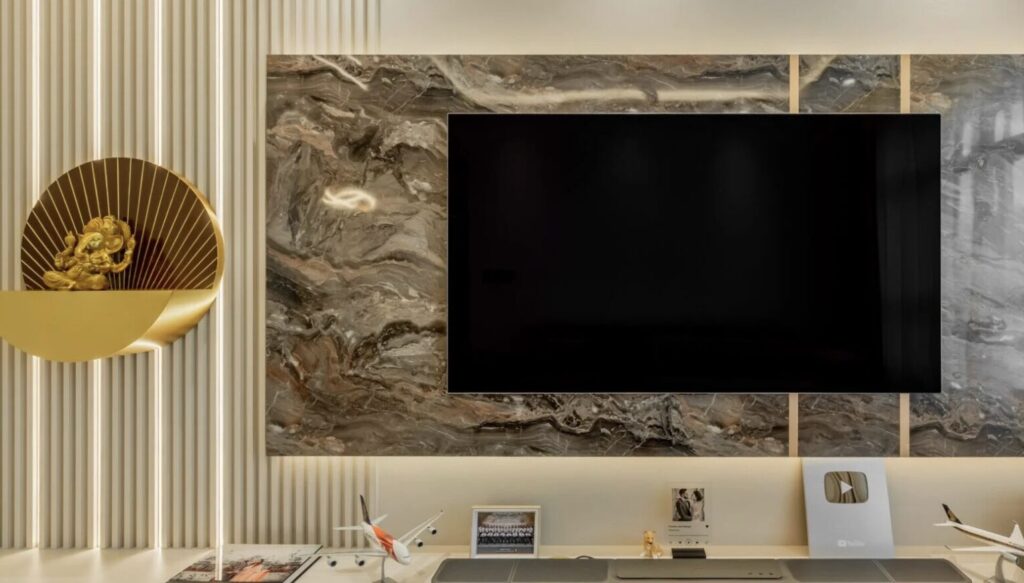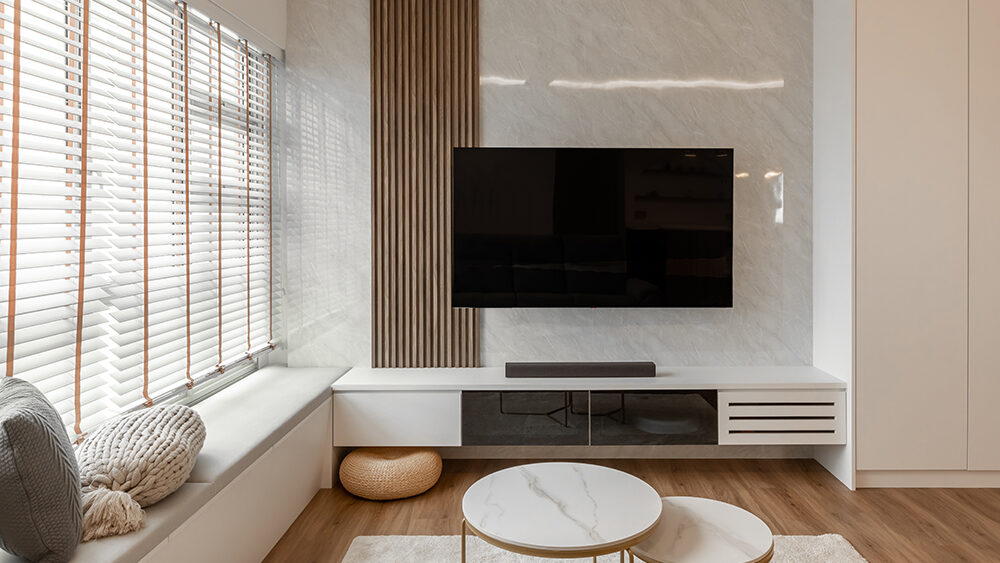Top 7 Must-Have Trends for Home Decor Enthusiasts in 2024
| Theme | Key Elements |
| Colour Trend | Emphasis on earthy tones combined with bold colours like sapphire blue and emerald green. These choices aim to enhance the aesthetic appeal while promoting a calming atmosphere to align with wellness and mindfulness. |
| Technology in Decor | Integration of smart home technology such as automated lighting systems and advanced security features. This promotes not only convenience and safety but also contributes to energy efficiency and a modern aesthetic. |
| Eco-friendly Materials | Use of materials like bamboo, recycled glass, and reclaimed wood that offer sustainability without sacrificing style or durability. These materials are applied in innovative ways, from durable flooring to decorative accents. |
| Local Cultural Elements | Integration of local motifs like Peranakan tiles, Malay batiks, and Chinese calligraphy to enrich homes with Singapore’s unique cultural heritage. This trend merges traditional arts into modern interiors, enhancing both aesthetic and cultural value. |
| Open Floor Plans | Continuation of open floor plans that blend living, dining, and kitchen areas to enhance social interaction and natural light exposure. Modern adaptations include creating subtle zones within the open space for varied activities. |
| Minimalism | Focus on minimalist design emphasizing clean lines and a clutter-free environment, which is especially practical in Singapore’s limited spaces. This trend highlights functionality with a preference for quality and meaningful belongings over quantity. |
| Innovative Furniture | Rising popularity of multi-functional and technology-infused furniture that reflects the modern needs for versatility and smart living solutions. Items like expandable tables or desks with built-in charging stations are becoming staple in homes. |
What are the latest colour trends for homes in 2024?
As home decor enthusiasts in Singapore look ahead to 2024, exciting colour trends are emerging that promise to refresh living spaces with vibrancy and style. The latest interior trends suggest a shift towards earthy tones blended with unexpected pops of bold colour. These include soothing shades of green and blue that echo the natural world, providing a serene backdrop to everyday life. These colours not only enhance the aesthetic appeal of a home but also promote a calming atmosphere, aligning perfectly with the increasing focus on wellness and mindfulness in interior design.
The incorporation of vibrant jewel tones, such as sapphire blue and emerald green, adds a layer of luxury and depth to interiors. These hues work beautifully in statement pieces or accent walls, uplifting the mood and transforming spaces into stylish sanctuaries. Moreover, the trend extends beyond paint, influencing furnishings and decor items, which can be seen in collections from popular Singaporean designers who emphasise sustainable and locally-sourced materials. Integrating these colours through thoughtful design choices helps in creating a personalised space that feels both contemporary and timeless.
Technology is influencing home decor trends
In today’s digital era, the impact of technology on home decor is profound, influencing everything from the way spaces are illuminated to how securely they can be safeguarded. Particularly in Singapore, the adoption of smart home technology has risen sharply, becoming integral in modern homes. This includes a wide array of features from automated lighting systems that offer energy efficiency and mood setting capabilities, to advanced security systems that provide peace of mind with surveillance cameras and smart locks, all controllable via smartphones.
The integration of such sophisticated technologies into home design doesn’t just enhance functionality and increase energy efficiency; it also vastly improves the aesthetic appeal of the living environment. Contemporary home decor trends are increasingly interconnected with technological advancements, where minimalistic designs align with sleek, high-tech products such as smart speakers, smart thermostats, and connected appliances. This blend achieves not only a clutter-free look but also offers high functionality and ease of use, setting new standards in living environments where design meets digital innovation.
Moreover, the capability to personalise home environments is another significant benefit attributed to these technological enhancements. Smart home systems enable the customization of multiple aspects of the home with simple voice commands or app controls, adjusting lighting, temperature, and even multimedia settings at the touch of a button. This personalization is particularly appealing to homeowners who prioritise a blend of style and operational efficiency. Residents can set scenes for different times of day or activities bright and energising for the morning rush, or soft and dim for a movie night crafting an atmosphere that truly reflects their lifestyle and mood.
These tech-rich environments cater to modern values of convenience, safety, and sustainability, making everyday living more efficient and environmentally friendly. Advanced systems provide improved energy management, leading to decreased utility bills and a reduced carbon footprint. Safety features in smart security systems not only deter potential intruders but also alert homeowners instantly of any security breaches, ensuring peace of mind. For exploring technological trends in homes, consider insights from smart home technologies in Singapore.
Eco-friendly materials can still be stylish and durable
The eco-conscious movement is not just a trend but an essential shift in the interior design industry, increasingly embraced by environmentally aware homeowners in Singapore. As sustainability becomes a priority, the demand for eco-friendly materials that do not compromise on style or durability is soaring. Leading this sustainable revolution are materials like bamboo, recycled glass, and reclaimed wood, each celebrated not only for their robustness but also for their unique aesthetic qualities that bring warmth and individuality to any decor.
Bamboo, for instance, is highly renewable due to its fast growth rate, making it a popular choice among those looking to reduce their environmental footprint. It brings a light, airy feel to interiors, often used in everything from flooring to furniture. Recycled glass, on the other hand, offers a touch of sleek modernity, turning what would be waste material into beautiful tiles or decorative accents that catch the light in mesmerising ways. Reclaimed wood, rich with history and character, offers unparalleled texture and a story behind each piece, whether it’s transformed into a statement dining table or rustic shelving.
Using these materials, designers and homeowners are finding innovative ways to incorporate eco-friendly solutions throughout the home without sacrificing visual appeal or longevity. These substances are being cleverly utilised to produce everything from elegant, durable flooring solutions to eye-catching focal points in living rooms and kitchens. Their versatility in application and intrinsic beauty are propelling their popularity and proving that sustainability can be seamlessly integrated into luxurious, contemporary designs.
As the interior design landscape continues to evolve, it’s clear that sustainable materials are defining new standards for stylish, durable interiors. Designers are increasingly leveraging these eco-friendly options to create spaces that are as fashionable as they are mindful of the planet’s resources. This sustainable approach is reshaping perceptions, showing that a commitment to the environment can also lead to strikingly beautiful and durable design outcomes. For those looking to embark on or continue their journey of eco-friendly living, a wealth of inspiration and practical advice is available, encouraging a deeper exploration into how sustainability can be beautifully realised in every corner of a home, promoting a lifestyle that is both aesthetically pleasing and kind to the earth. Interested homeowners can garner inspiration and tips from sustainable living ideas.
Local cultural elements significantly influence interior design
Local cultural elements are increasingly pivotal in crafting the interior landscapes of Singaporean homes. Amidst the tide of globalisation that has brought diverse cultures into closer contact, there has been a burgeoning appreciation for the local craftsmanship and cultural narratives that underscore the distinctive identity and heritage of the region. This reverence for local culture is vividly reflected in the way traditional Singaporean motifs, such as Peranakan tiles, Malay batiks, and Chinese calligraphy, are being seamlessly integrated into home decor, imbuing living spaces with a deeply personal touch and distinct local flavour.
These cultural elements serve a greater purpose than merely enhancing the aesthetic appeal of homes. They act as vital conduits between the past and the present, enabling a living dialogue with history while being adapted in manners that resonate with contemporary living. Such elements help in forging spaces that are not just visually appealing but are imbued with stories and significance, making them truly unique. Through their incorporation, homeowners and designers are bridging cultural heritage with modern design needs, ensuring these traditions continue in a modern context.
Moreover, these traditional motifs contribute to creating interiors that are culturally rich and visually dynamic. They allow interiors to celebrate Singaporean culture in everyday settings, transforming ordinary spaces into showcases of heritage and artistry. By integrating these elements thoughtfully, designers are avoiding contrived outcomes instead, they are achieving a natural blend that respects tradition while embracing modernity. This thoughtful amalgamation enriches living spaces and elevates them beyond mere functionality to become places of cultural expression and personal connection.
As more individuals look to root their living spaces in cultural depth while still aligning with modern aesthetics, there’s a continuous exploration of innovative ways to incorporate these elements. From feature walls adorned with intricate Peranakan tiles to throws and cushions patterned with Malay batiks, or shelves graced by objects featuring Chinese calligraphy, every detail can help narrate a storied past. Moreover, this trend reflects a broader movement towards conscious and identity-centric design, where homes are seen as a reflection of personal and communal histories.
For homeowners and designers eager to delve deeper into blending traditional motifs with contemporary interior design strategies, extensive resources are available. Such guidance ensures that the integration of these elements is done gracefully and meaningfully, ensuring that homes not only look spectacular but also resonate on a deeper cultural level. You can explore more about how to integrate these cultural elements effectively in modern interior designs, ensuring a harmonious blend that respects tradition and modernity alike, through Choosing Interior Designs in Singapore. This resource offers valuable insights and inspiration for creating spaces that beautifully bridge historical richness with contemporary elegance, making each home uniquely Singaporean and universally appealing.
Open floor plans are still popular in Singapore.
The appeal of open floor plans in Singapore continues to surge, capturing the preferences of modern families who prioritise functionality alongside social connectivity in their living spaces. This architectural design supports large, fluid spaces where the living room, dining area, and kitchen blend seamlessly into one another. This configuration enhances interaction and fosters a sense of community among household members, making it ideal for both lively social gatherings and daily family life. Additionally, the open design maximises the penetration of natural light and optimises air circulation, features that are especially beneficial given Singapore’s warm, humid climate.
Open floor plans are celebrated not only for their aesthetic appeal but also for their adaptive nature. They can be easily modified to meet the evolving needs of a household or to accommodate new interior design trends. This flexibility makes open floor plans an enduring choice for homeowners who foresee a need for changes as their families grow and their lifestyles evolve. Whether hosting a dinner party or enjoying quiet family evenings, these spaces provide a versatile backdrop that can be tailored to any occasion.
As architectural and interior design trends continue to evolve, there’s a noticeable shift towards incorporating defined zones within the open plan layout. By implementing subtle partitions through varied flooring materials, distinct ceiling designs, or strategic furniture placement, designers can create designated areas for different activities without disrupting the visual flow of open space. This approach maintains the expansive feel of an open floor plan while adding organisational structure, making it easier to designate areas for work, relaxation, or entertainment.
This nuanced adaptation of open floor plans ensures they remain at the forefront of modern home design in Singapore, providing families with a foundation that supports dynamic living and effortless elegance. For homeowners and designers keen to explore how to maximise the potential of these expansive layouts while keeping spaces functionally distinct yet cohesive, valuable insights and recommendations are available. Discover more about crafting sophisticated and practical open concept living spaces that meet the demands of contemporary living by visiting this resource on open concept living rooms. This guide offers expert advice and creative ideas to help you harness the full potential of open floor plan designs, ensuring your home is not only stylish but also thoroughly adapted to your lifestyle.
Impact of Minimalism on Modern Home Decor
Minimalism continues to influence home decor trends in 2024, emphasising clean lines, clutter-free spaces, and a monochromatic colour palette. This design philosophy not only promotes a tidier home environment but also a clearer mind, aligning with the global trend towards wellness and mindfulness in living spaces. In Singapore, where space is often limited, minimalism helps maximise small areas, making them appear larger and more open. Techniques and benefits of minimalist design in compact spaces are deeply analysed in the article on adopting minimalist principles in Singaporean homes.
The ethos of minimalism also extends to the choice of furnishings and decor. Instead of large, ornate pieces, the focus is on quality over quantity—selecting fewer but better-made and more meaningful items that last longer and add value to everyday life. This approach not only reduces waste but also emphasises sustainability. For those interested in minimalist yet functional furniture, consider exploring further at best furniture investments for minimalist interiors.
Additionally, minimalism isn’t just about visual aesthetics—it’s about functionality. Efficient storage solutions are integral, with hidden compartments and multi-functional furniture becoming staples in the minimalistic home. These intelligent solutions ensure that every item has a place, contributing to a more organised and stress-free environment. Insights on creating functional, minimalist spaces can be gleaned from transforming small spaces effectively. Ultimately, minimalism in 2024 serves not just a design preference but a lifestyle choice, promoting serenity and efficiency in the urban home.
Innovative Furniture Pieces are Gaining Popularity
The furniture market in Singapore is witnessing an exciting evolution with the introduction of pieces that are as functional as they are novel. Multi-functional furniture, such as expandable dining tables or sofa beds with storage solutions, are gaining traction, especially in HDB flats and smaller condominiums where space is at a premium. These innovations address the dual need for comfort and functionality, with a focus on utilising every square foot efficiently. Inspirations for multi-functional furniture and its integration can be found in the exploration on optimizing spaces with smart furniture.
Gone are the days when furniture was picked purely on the basis of aesthetics. Today’s buyers are looking for pieces that can adapt to different uses and layouts. Convertible desks that can be used both for work and as dining surfaces, or modular sofas that can be rearranged depending on the occasion, are just a few examples of this trend. More ideas and examples can be explored through investment-worthy furniture pieces.
The rise of technology-infused furniture is also noteworthy. Tables and desks with built-in wireless charging pads, smart lamps with touch-controlled features, and voice-activated mirrors enhance convenience and reflect the modern homeowner’s craving for ‘smart’ living solutions. To delve deeper into smart furniture innovations, see options at smart kitchen remodelling concepts. As the lines between technology and furniture blur, the possibilities for creating responsive and intelligent environments within homes are boundless.
FAQs
1. What are the key color trends in home decor for 2024?
The key color trends for 2024 focus on earthy tones paired with vibrant jewel tones such as sapphire blue and emerald green, emphasizing a tranquil yet luxurious atmosphere that aligns with health and wellness trends in interior design.
2. How is technology influencing home decor?
Technology is profoundly transforming home decor through smart home systems that enhance functional efficiency, safety, and aesthetic appeal. This includes automated lighting, advanced security, and environmental controls which can be managed via smartphones for a smarter, more interconnected living experience.
3. Why are eco-friendly materials popular in modern interior design?
Eco-friendly materials are popular due to their sustainability and minimal environmental impact, without compromising style or durability. Materials like bamboo, recycled glass, and reclaimed wood are favored for their unique textures and robustness, catering to both eco-consciousness and aesthetic appeal.
4. How do local cultural elements fit into modern home decor?
Local cultural elements like Peranakan tiles and Malay batiks are increasingly incorporated into modern decor to honor and celebrate Singapore’s rich heritage. These elements offer a distinctive local flavor punctuating modern interiors with deep cultural narratives.
5. What makes open floor plans desirable in current home designs?
Open floor plans are desirable for their ability to create spacious, free-flowing areas that enhance social connectivity and maximize natural light. Modern adaptations also include zone-defined spaces that provide functionality without sacrificing the openness of the layout.
Are you looking for a space makeover? Look no further! Drop us an enquiry at [email protected] and let us help you transform your home into a smart and efficient living space. Our experts are here to assist you in finding the perfect smart home devices to suit your needs and enhance your lifestyle.
Designing your dream home can be an exciting journey, but it can also be overwhelming. With so many options and styles available, it can be challenging to decide what is best for you and your family. However, by considering factors such as functionality, color palette, furniture, materials, and personal style, you can create a space that is not only beautiful but also practical and comfortable.
When it comes to achieving a successful interior design project, choosing a provider with a rock-solid reputation and exceptional skills is paramount. At Redbrick Homes, we understand that inspiration is key. That’s why our top-quality interior design partners are ready to wow you with beautiful, personalized spaces brimming with exceptional Singaporean ideas.
Remember to take your time, do your research, and work with a professional if needed. With the right interior design choices, you can transform your house into a dream home that you’ll enjoy for years to come.


